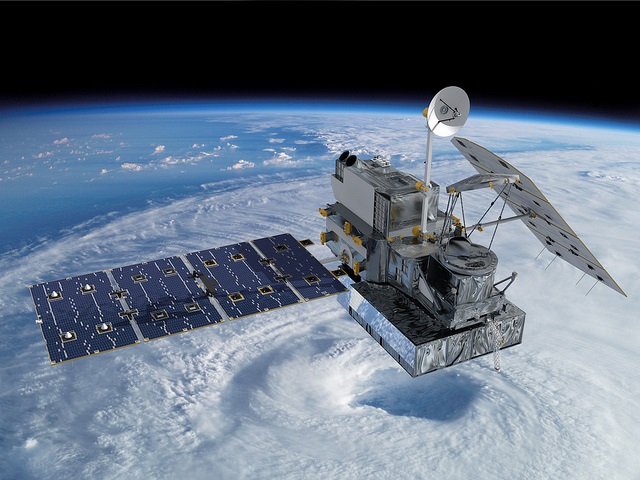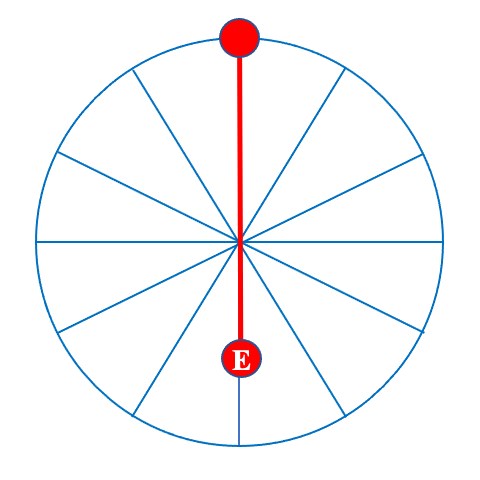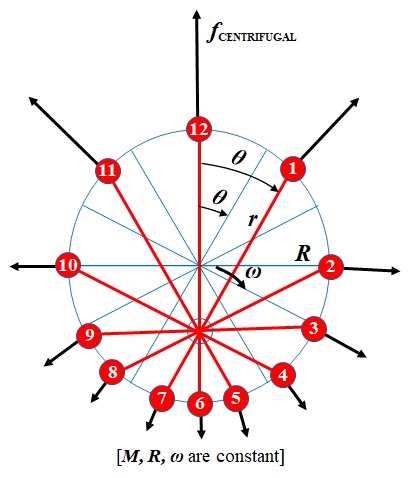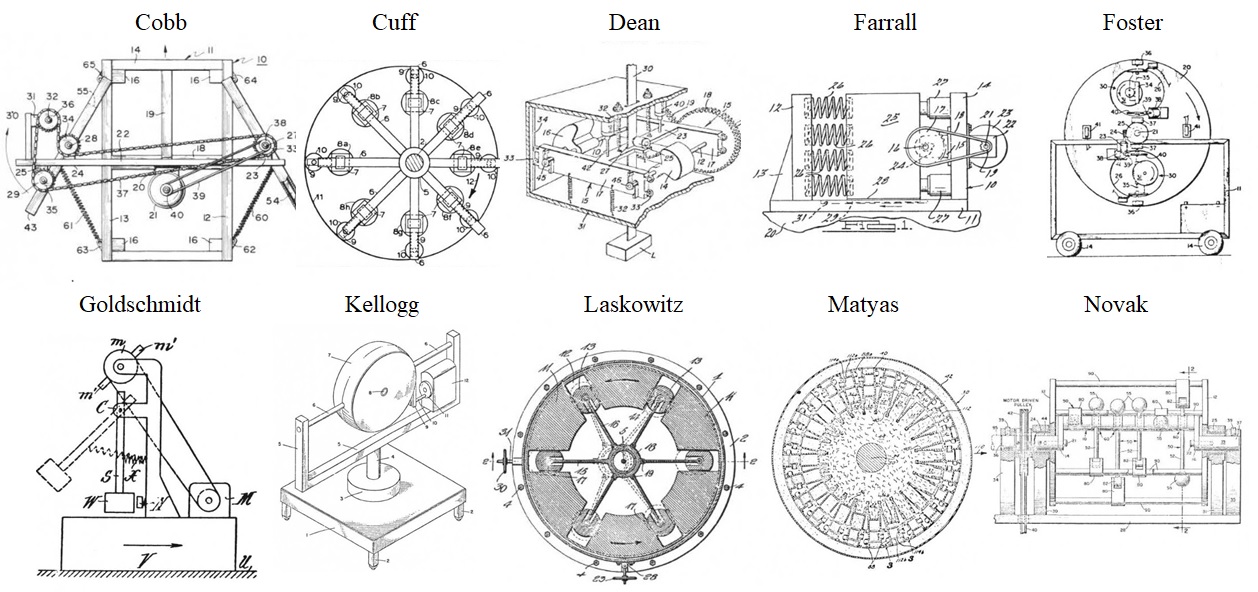|
Version 2.0 Copyright ©2021by Paul Niquette. All rights reserved. |
|||
 NASA-GMP Satellite
with Proposed Pocket Rocket
Embedded at the Center-of-Mass
Wouldn't it
be great to have an enclosed mechanical 'drive' that
produces thrust and requires no interaction with
material things on the outside? No torquing of wheels rolling on rails or pavement, no propellers churning through water or blowing holes in the atmosphere, no burning fluids passing through turbines, no exhaust gases expelled through nozzles.That would sure be great, all right. And in space, there are no 'material things' to interact with! Only one choice: rocketry and plenty of consumption and depletion, whether by chemistry or by ionized atoms accelerated through electrical grids. Within the solar system, an 'ionic' propulsion system does benefit from a bountiful photovoltaic energy source, the sun! So does any Inertial Propulsion (IP) system. (If it can be made to work.)For this entry, your puzzle-master has coined the expression Pocket Rocket to emphasize the isolation of the IP system from outside interactions. The word 'pocket' also celebrates the mechanical benefits of zero windage losses assured by the vacuum in space.
There are hundreds of Inertial Propulsion inventions. Just take a look at these IP searches by Google and by Bing. Consider one inventor named Robert Cook who has spent his life developing versions of Cook Inertial Propulsion (CIP). His work is documented in the 1980 e-book... Death
of
Rocketry by Joel Dickenson with Robert Cook
Cuff, Dean, Farrall, Foster, Goldschmidt, Kellogg, Laskowitz, Matyas, Novak, Nowlin
Whether any of those patents were actually issued is not important to us here, because after 41 years they would all have expired.
 Fig. 0.
Niquette Inertial Propulsion (NIP) Concept Fig. 0 and the other schematic sketches in the Pocket Rocket puzzle use their black frames to represent rigid structures, each containing all their NIP elements inside -- the Pocket. Let us begin our analysis of the NIP concept, which applies... Nine Design
Criteria
Theory of Operations We start with how the NIP concept achieves Inertial Propulsion. Fig. 1 depicts one mass M of the 'twin' masses inside the NIP unit as a sphere or cylinder (in red) rotating at constant angular velocity ω clockwise around a circle with radius R. Motion is constrained by a rigid track (in blue). For convenience, numbers mark the positions of twelve points around the circle. The mass M passes each successive mark at equal time intervals (t = θ / ω).
 Fig. 1.
Simplified NIP showing one mass M
rotating clockwise. The mass M
is connected to the drive axis by a
telescopic arm (also in red).
The drive
GO TO SOLUTION PAGE  Centrifugal versus Centripetal
The expression centrifugal force is the subject of confusion -- even occasional controversy. Solvers of the Circling: Ground and Sky will find a rather informal treatment of this subject -- only mentioning that the terminology defined elsewhere as a particular kind of fictitious force also known as a pseudo force. the fictional force fCENTRIFUGAL is directed away -- "fleeing" -- from the center of curvature and thus sharing a common root with the word "fugitive." Hypernote: Patent drawings collected by Joel Dickensen and Robert Cook and published in Death of Rocketry (1980)... |
